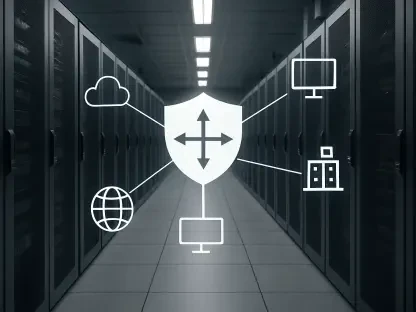Across Asia, businesses are bracing for a seismic shift as the longstanding 3G network becomes increasingly obsolete, with complete shutdowns in numerous regions anticipated by the end of 2025. This transition is driven largely by the superior capabilities of 4G LTE and 5G networks, which promise faster data speeds, reduced latency, and broader connectivity. These advancements are especially critical for businesses reliant on IoT devices in sectors such as utilities, logistics, and smart infrastructure, where maintaining seamless operations is non-negotiable. Companies that fail to adapt might find themselves grappling with significant risks, including device downtime and service disruptions, which could hinder operational efficiency and incur unexpected costs. The shift requires enterprises to reevaluate their technology strategies, ensuring they are prepared for the impending phase-out of 3G networks and the inevitable march toward more advanced technological frameworks.
Understanding the Transition
The transition from 3G to 4G LTE and 5G networks is not merely a technological evolution but a necessity driven by the demand for greater network capacity and enhanced performance. Over the past years, the proliferation of digital services and IoT applications has significantly stressed existing telecom infrastructures. As a result, mobile operators across Asia remain committed to reclaiming resources from outdated 3G networks to bolster the capabilities of newer networks. These networks are equipped to handle increased data traffic volumes more efficiently, addressing the demands of modern enterprises that rely on connectivity for their core operations. Transitioning to these networks also supports the rollout of IoT solutions that require low latency and high reliability, thereby paving the way for innovations in automation and real-time data processing. Businesses must consider these factors to remain competitive and avoid the pitfalls that come with being tethered to an antiquated network infrastructure.
Singapore, Malaysia, India, the Philippines, and Indonesia are at different stages in this 3G shutdown process, yet the timeline for phasing out these networks is becoming increasingly clear. Enterprises operating within these regions must prioritize understanding their dependency on 3G and proactively seek alternatives to maintain connectivity. Despite widespread announcements of the impending 3G sunset, numerous businesses exhibit a lack of preparedness, mistakenly assuming that telecommunications providers will seamlessly manage this transition for them. This oversight could lead to costly service interruptions and rapid, unplanned upgrades. Therefore, it is vital for businesses to conduct thorough audits of their current technology stacks, identifying elements susceptible to disruption and devising comprehensive plans for upgrading their systems to accommodate the advanced capabilities of 4G LTE, 5G, and other future-proof technologies like LTE-M and NB-IoT.
Preparing for the Change
For businesses, preparing comprehensively for the 3G shutdown is crucial to ensuring continued productivity and minimizing potential disruptions. This involves a detailed assessment of all assets and devices currently relying on the 3G network for connectivity. Engaging with IoT solution providers can offer insights into designing phased migration strategies that address specific technological needs while mitigating risks associated with immediate network changes. Businesses should also invest in training programs to enhance their teams’ understanding of newer networks’ nuanced capabilities, thus facilitating smoother integration and adoption. This proactive stance enables companies to future-proof their operations, fostering resilience in the face of evolving technological landscapes.
Beyond internal readiness, collaboration with telecom operators and technology partners is pivotal. These entities can offer valuable resources and guidance, helping businesses navigate the complexities of transitioning to newer networks. Contracts and service agreements with telecom providers should be reviewed to ensure they complement long-term strategic objectives. By opting for devices and solutions compatible with 4G LTE and 5G networks, businesses lay the groundwork for adaptability, equipping themselves to leverage emerging applications and services intrinsic to these advanced networks. Such forward-thinking will not only help businesses stay afloat as the 3G networks are retired but also position them as leaders in adopting innovative solutions that drive growth and efficiency.
Embracing the Future
The shift from 3G to 4G LTE and 5G is more than just technological progress—it’s essential to meet the growing demand for better network capacity and performance. The explosion of digital services and IoT has put a strain on existing telecom infrastructures. In response, mobile operators in Asia are focused on reclaiming resources from obsolete 3G networks to enhance newer ones, which can efficiently manage increased data traffic. This transition is crucial for enterprises that depend on connectivity for their operations. Upgrading networks also facilitates the deployment of IoT solutions requiring low latency and high reliability, fostering innovations in automation and real-time data processing.
In countries like Singapore, Malaysia, India, the Philippines, and Indonesia, the process of shutting down 3G networks is underway but varies by region. Businesses must assess their reliance on 3G and explore alternatives to maintain connectivity. Ignoring this could result in unplanned service interruptions. Companies should audit their tech stacks to identify vulnerable components and plan to upgrade their systems to leverage the capabilities of 4G LTE, 5G, and future-ready technologies like LTE-M and NB-IoT.









